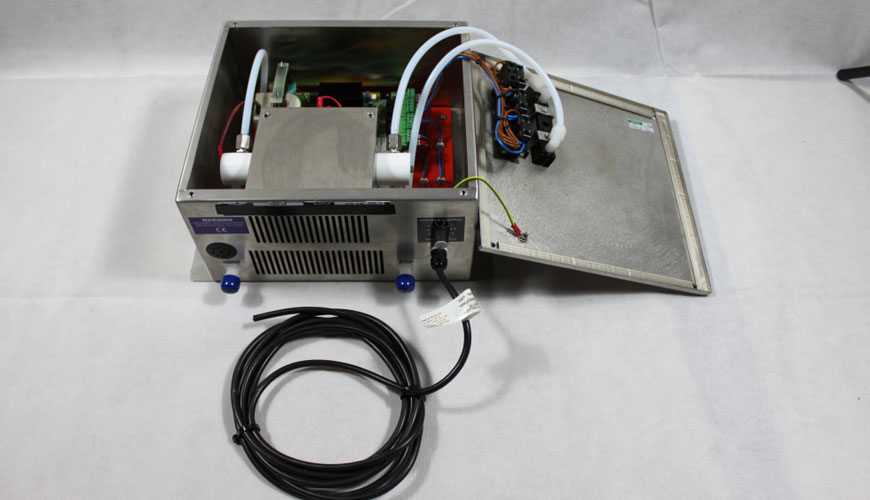

The standard “EIA 364-17 TP-14B Ozone exposure test procedure for electrical connectors” published by the Electronic Components Manufacturers Association (ECIA) describes a test method used to evaluate the ability of connectors to withstand the effects of controlled amounts of ozone and still maintain effective environmental protection. .

The equipment used when performing this test complies with the “ASTM D1149-18 Standard test methods for rubber degradation - Cracking in an ozone-controlled environment” standard developed by the American Society for Testing and Materials (ASTM). Accordingly, the ozone test chamber is made of a material that has a minimum reaction to ozone and the minimum compartment volume is 0,14 cubic meters. The test chamber has a means for generating and controlling air-ozone flow. Adequately filtered air is supplied directly from the laboratory or compressed air source. This air is pre-dried to a dew point of minus 51 degrees or lower to prevent the production of nitric acid. The air-ozone flow is introduced into the room in such a way that stratification of ozone is prevented.
When testing, each test sample and test equipment is stabilized under standard environmental conditions unless otherwise stated. Each test sample is then subjected to an ozone concentration of 2 ppm to 100 ppm by volume for 150 hours.
Potential failure situations are:
The report to be issued when the test is completed includes the following details:
Briefly, EIA-364-14 Performance test standard for electrical connectors is used to evaluate the environmental performance of sockets and electrical connectors in controlled environment applications.
Ozone is a colorless gas with a pungent odor. It is used to purify air and drinking water, purify industrial waste, make oils, bleaches and waxes, and other chemicals. Ozone has been included in the dangerous substance list and limit values have been determined by various international organizations. For example,
Ozone is a stronger oxidant than oxygen. In enclosed spaces, ozone can be produced due to electrical or electromagnetic disturbances. Extreme conditions combined with ozone exposure can damage electrical equipment. Materials with high ozone resistance include silicone, 316 stainless steel and teflon (PTFE, FEP, PFA). Materials with low ozone resistance include natural rubber, nylon, cast iron, steel (lightweight) and nitrile.
Materials susceptible to ozone corrosion doubly so for components subjected to physical stress. These materials begin to deteriorate rapidly when exposed to ozone. Surface cracking (fine cracks), deep cracks or complete fractures will occur in the material. Using ozone-resistant materials helps protect electrical components from ozone corrosion and keep them working as they should under harsh conditions.
When an application calls for the best, the use of military-grade connectors and receptacles, cable assemblies, shielded cables and more is recommended. Military-grade electrical components are designed and manufactured to meet or exceed military standards. At the same time, the EIA-364-14 standard helps ensure high performance from products under stressful conditions, and the products are generally resistant to ozone, corrosion, water and extreme hot or cold temperatures.
Electrical connectors that come into contact with or will come into contact with ozone must be made of an ozone-resistant material that can withstand the penetrating and oxidizing effects of ozone. Ozone causes materials to crack, become brittle, lose strength, and undergo other types of degradation.
Among the numerous testing, measurement, analysis and evaluation studies provided to businesses by our organization, there are also testing services in accordance with the "EIA-364-14 TP-14B Ozone exposure test procedure for electrical connectors" standard.
To get an appointment, to get more detailed information or to request an evaluation, you can ask us to fill in our form and reach you.